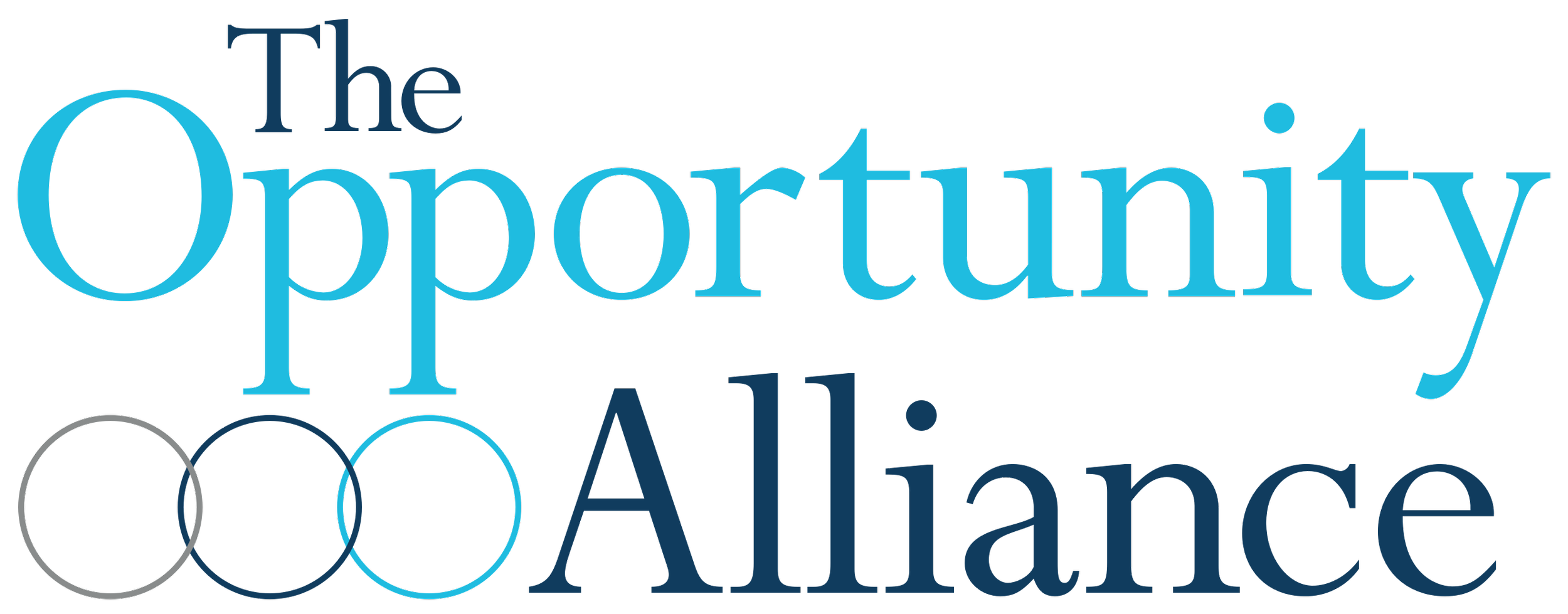Over Fifty Years of Community Action
The Opportunity Alliance - Founded on July 9, 1965
The Opportunity Alliance was incorporated in 1965 as the Community Action Agency for Cumberland County, Maine. It was a turbulent time in history, but it was also an era of hope and opportunity.
Monday, November 25, 1963: John F. Kennedy is buried at Arlington National Cemetery.
Friday, February 7, 1964: The Beatles arrive on their first visit to the United States.
Friday, May 22, 1964: U.S. President Lyndon B. Johnson announces the goals of his Great Society—social reforms to bring an “end to poverty and racial injustice” in America.
Friday, June 12, 1964: South Africa sentences Nelson Mandela to a life in prison.
Thursday, July 2, 1964: President Johnson signs the Civil Rights Act into law.
War on Poverty
During his 1964 State of the Union address, President Johnson announced that “this administration today, here and now, declares unconditional war on poverty in America.” Johnson declared:
“Poverty is a national problem, requiring improved national organization and support. But this attack, to be effective, must also be organized at the State and local level.
For the war against poverty will not be won here in Washington. It must be won in the field, in every private home, in every public office, from the courthouse to the White House.
Very often, a lack of jobs and money is not the cause of poverty, but the symptom.
Our aim is not only to relieve the symptoms of poverty but to cure it–and above all, to prevent it.
No single piece of legislation, however, is going to suffice.”
Speaking at the University of Michigan on May 22, 1964, Johnson described his vision: “The Great Society rests on abundance and liberty for all. It demands an end to poverty and racial injustice, to which we are totally committed in our time. But that is just the beginning…the Great Society is not a safe harbor, a resting place, a final objective, a finished work. It is a challenge constantly renewed, beckoning us toward a destiny where the meaning of our lives matches the marvelous products of our labor.”
W. Willard Wirtz, Johnson’s Secretary of Labor, emphasized that the War on Poverty had two central objectives:
First, to provide jobs and training, especially for those young people now growing up in poverty, and increasingly condemned by lack of economic opportunity to repeat the cycle over again.
Second, to begin the process of planning and organizing that will bring the entire resources of a community to bear on the specific problem of breaking up the cycle of poverty in that community.
The War on Poverty attacked the roots and consequences of poverty by creating job opportunities, increasing productivity, and enhancing the quality of life. The aim was not to end poverty but to eradicate the principal causes of it.
Economic Opportunity Act of 1964
The Economic Opportunity Act (EOA) of 1964 declared: “It is, therefore, the policy of the United States to eliminate the paradox of poverty in the midst of plenty in this Nation by opening to everyone the opportunity of education and training, the opportunity to work, and the opportunity to live in decency and dignity.” The EOA authorized the formation of local Community Action Agencies (CAA) as part of the War on Poverty. These agencies, directly regulated by the federal government, would work to:
Eliminate poverty
Expand educational opportunities
Increase the safety net for the poor and unemployed
Tend to health and financial needs of the elderly
The EOA established a cabinet level office (The Office of Economic Opportunity) as well as:
Adult Basic Education
Community Health Centers
Congregate Meal Preparation
Economic Development
Family Planning
Foster Grandparents
Head Start
Job Corps
Legal Services
Neighborhood Centers
Neighborhood Youth Corps
Summer Youth Programs
VISTA
Work Study
Community Action Agencies
The EOA defined the purpose of a Community Action Agency as “to stimulate a better focusing of all available local, state, private, and federal resources upon the goals of enabling low-income families, and low-income individuals of all ages, in rural and urban areas, to attain the skills, knowledge and motivation to secure the opportunities needed for them to become self-sufficient.” CAAs are local private and public non-profit organizations that carry out the Community Action Program (CAP). There are currently over 1,000 CAAs operating across the United States.
Community Services Block Grant
The Community Services Block Grant (CSBG) provides federal funding for CAAs and other programs that seek to address poverty at the community level. Like other block grants, CSBG funds are allocated to the states through a formula, with less federal oversight and fewer federal requirements than categorical grants. The CSBG formula determines each state's funding level based on poverty population; once disbursed, most of the money is passed by the states and other jurisdictions to CAAs and other designated organizations to be spent on employment, education, income management, housing, nutrition, emergency services, and health.
Tripartite Board
Each CAA is governed by a board of directors consisting of at least one-third low-income community members (or their representatives), one-third public officials, and up to one-third private sector members. This board structure is defined by federal statute and is known as a tripartite board.
